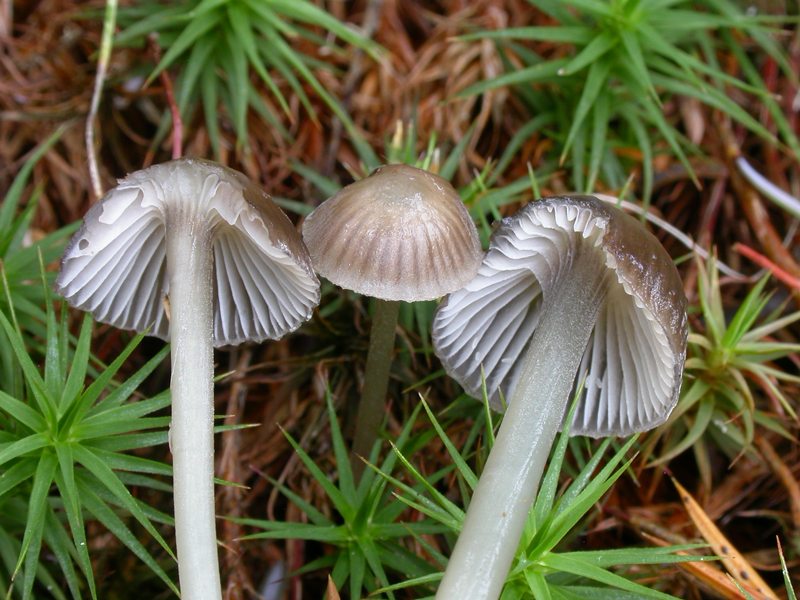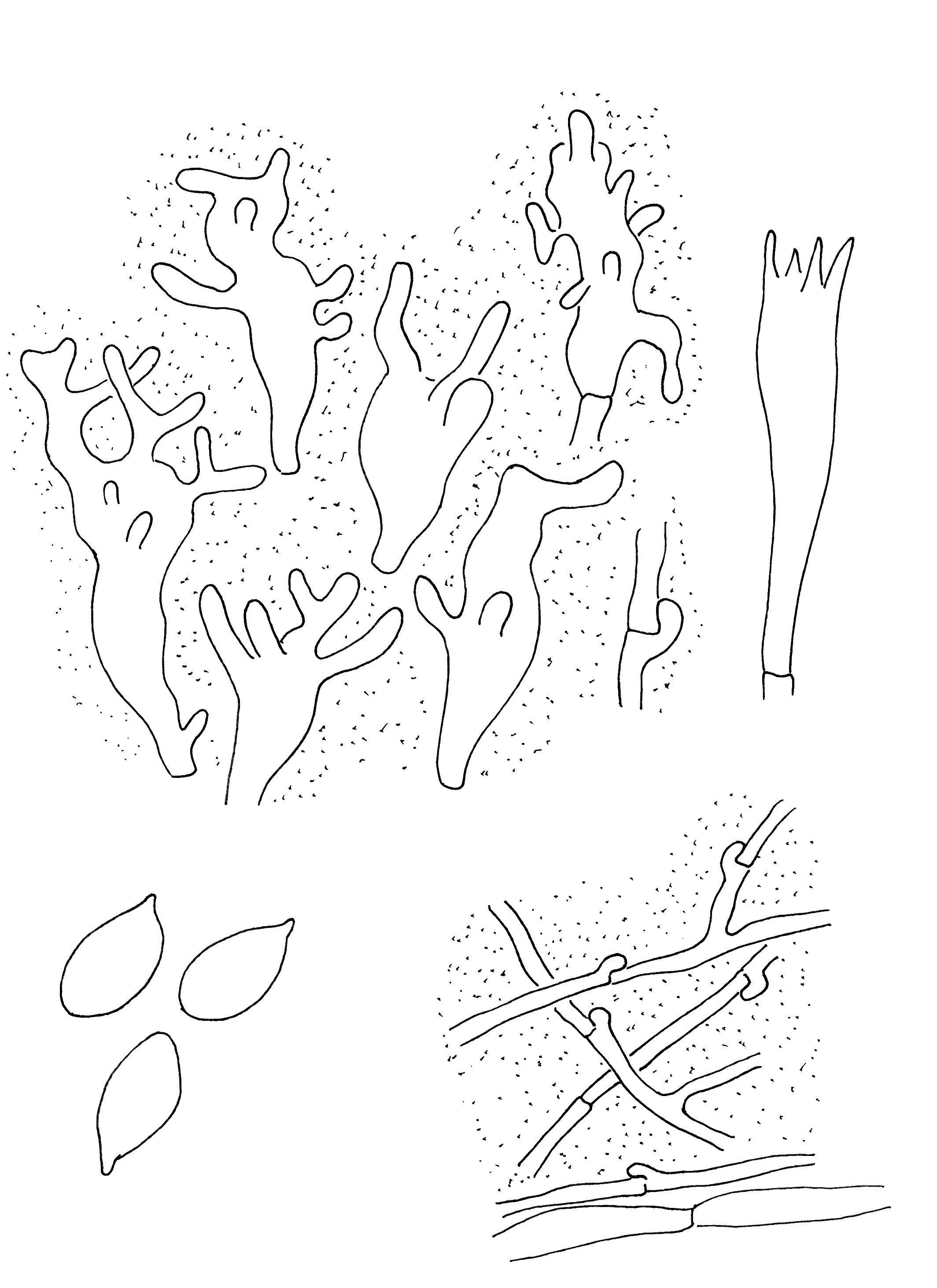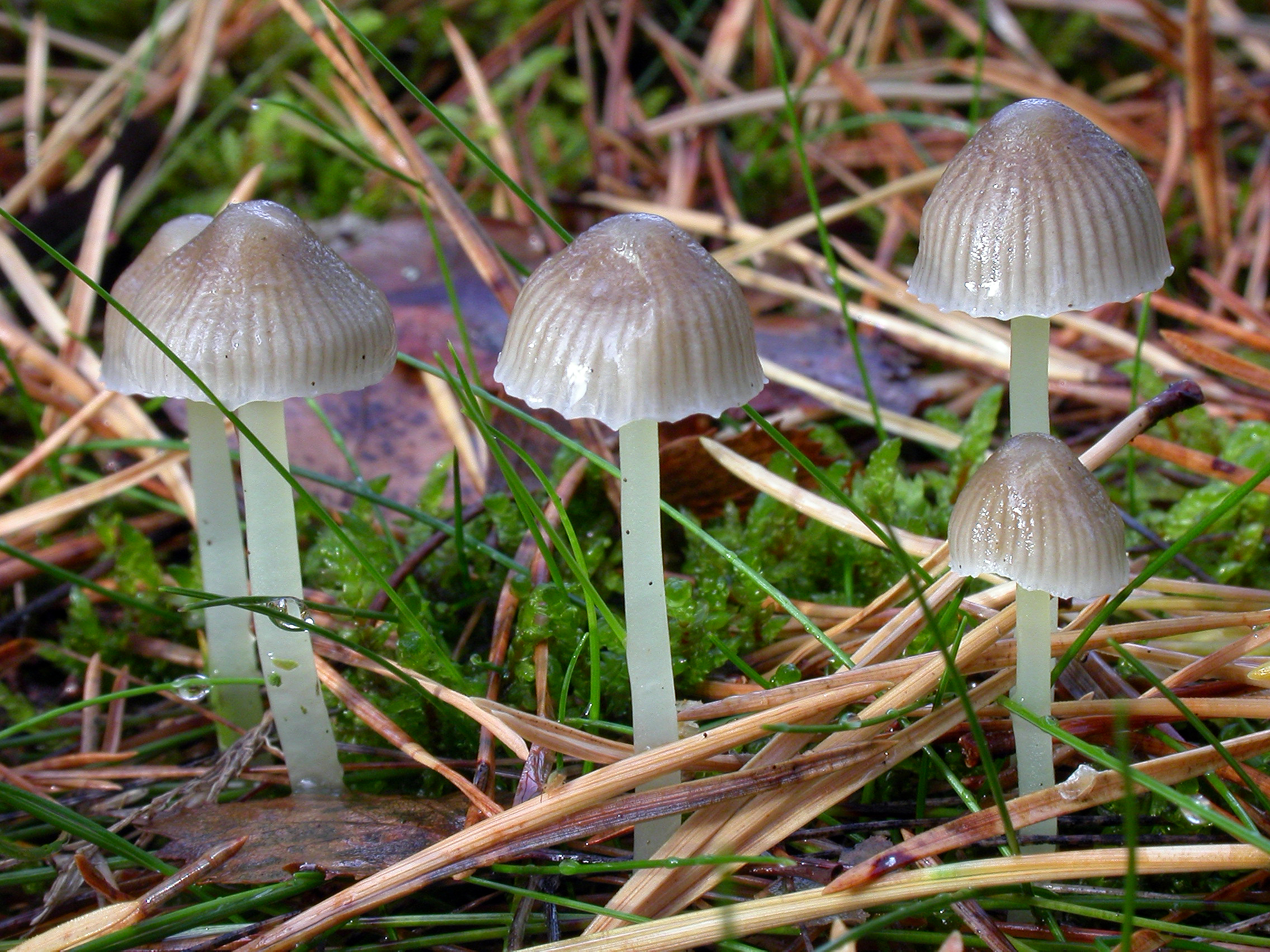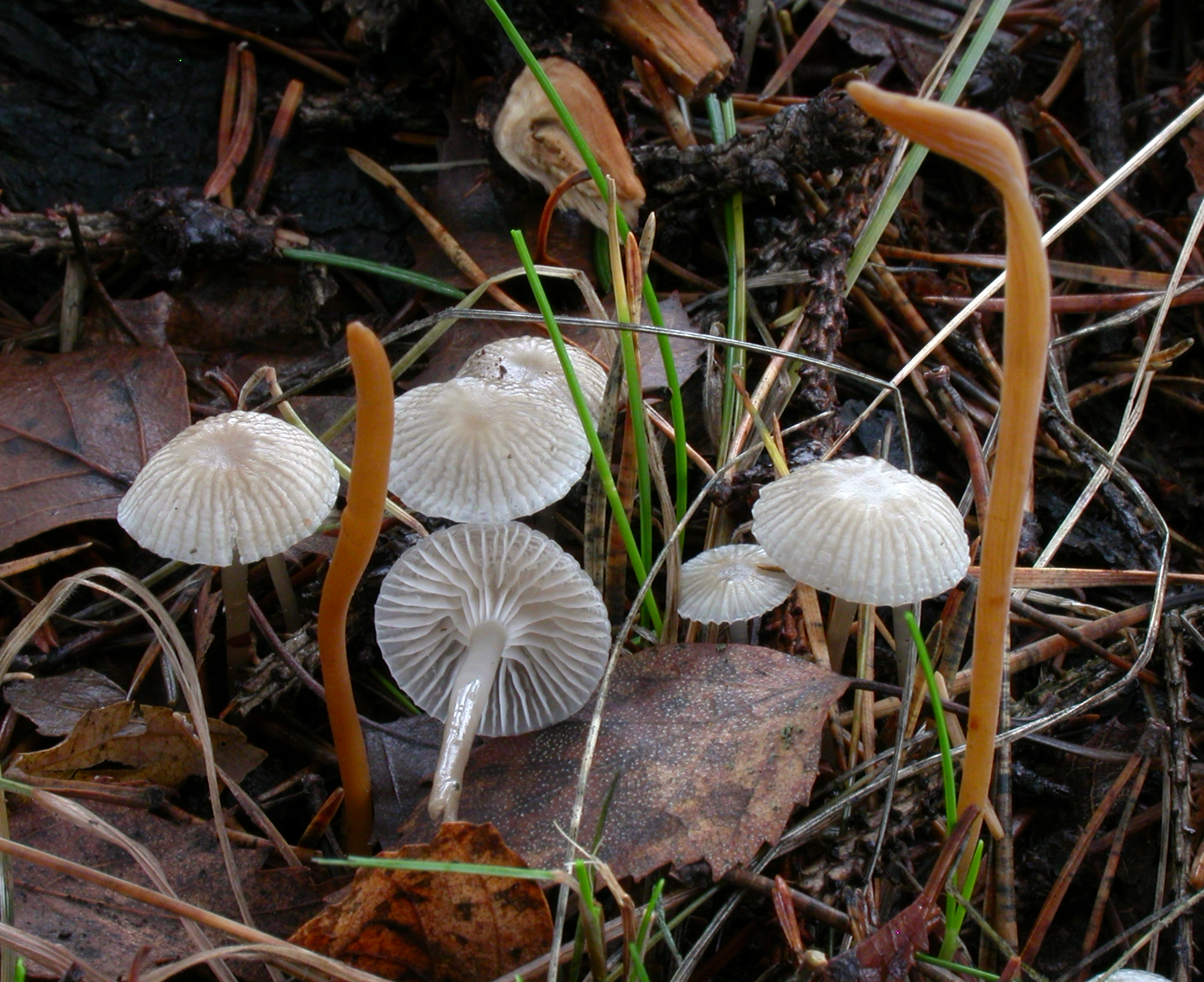Mycena agrestis
Mycena agrestis
Description
Cheilocystidia, hypha of the cortical layer of the stem, basidium, spores, and hyphae of the pileipellis.
Cap 10-20(-25) mm across, at first acutely conical, flattening with age and becoming more or less irregularly campanulate, finally plano-convex, more or less umbonate, or somewhat depressed at the centre, little to shallowly sulcate, translucent-striate, pruinose, glabrescent, viscid, covered with a gelatinous separable pellicle, blackish grey, blackish brown to dark grey-brown, paler when dry, often darker at the centre and the margin. Gills 20-32 reaching the stem, arcuate, more or less rugulose with age, decurrent with a tooth, pale to dark grey, with a separable paler edge. Stem 30-65 x 1.5-3.5 mm, cylindrical to somewhat depressed, pruinose, glabrescent except for the apex, viscid, greyish, usually darker below, covered with few fibrils at the base. Odour indistinct or somewhat farinaceous. Basidia 30-40 x 7-9 µm, slender-clavate, 4-spored, with sterigmata up to 6.5 µm long. Spores 9.2-10.3 x 4.7-5.4 µm, Q = 1.8-1.9, pip-shaped, weakly amyloid. Cheilocystidia 18-32 x 5.5-7 µm, forming a sterile band, embedded in gelatinous matter, clavate, apically covered with comparatively few, unevenly spaced, coarse, occasionally curved, cylindrical to clavate excrescences 2.5-14.5 x 1.5-5.5 µm. Pleurocystidia absent. Lamellar trama dextrinoid. Pileipellis an ixocutis of much branched, smooth hyphae 1.5-2.5 µm wide, the terminal cells 1-1.5 µm wide, apically diverticulate and much branched, with the excrescences 0.9-3.5 x 0.9 µm. Hyphae of the cortical layer of the stem 1.5-2.5 µm wide, embedded in gelatinous matter, smooth, terminal cells not observed. Clamps present in all tissues.
Ecology and distribution
Gregarious among grass in open fields and in moss under Juniperus. Autumn. Very rare.



